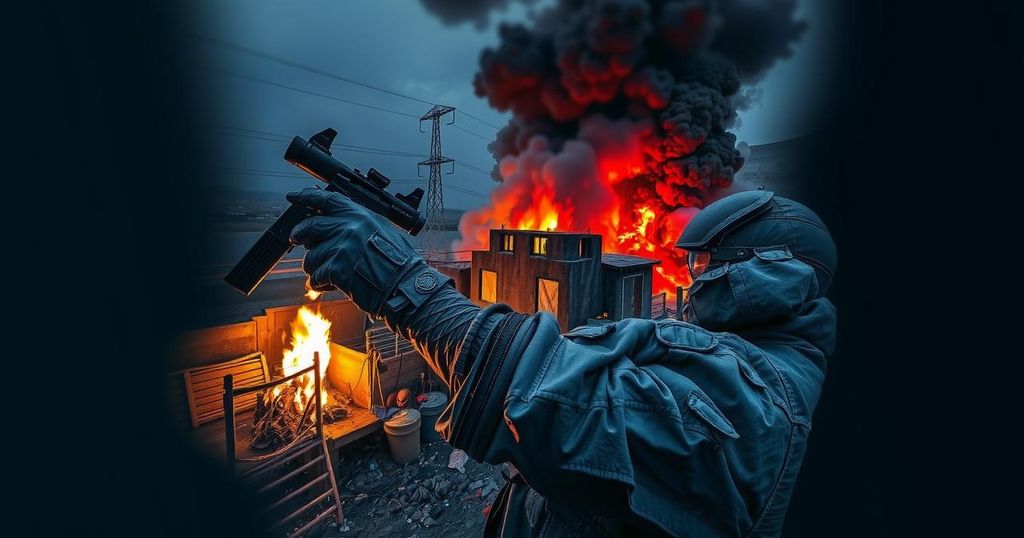An Israeli airstrike in southeastern Lebanon has killed three journalists at a media compound, with notable losses including staff from Al-Mayadeen TV and Al-Manar TV. The attack occurred without prior warning from the Israeli military, amidst escalating tensions following a month of hostilities related to the Gaza conflict. The incident highlights the growing peril for journalists in the region during ongoing violence.
An Israeli airstrike targeting a compound in southeastern Lebanon, which housed multiple media personnel, tragically resulted in the deaths of three journalists, as reported by Lebanon’s state-run National News Agency. Footage aired by local news network Al Jadeed depicted the devastation at the site, showing collapsed structures and vehicles emblazoned with the word “PRESS” engulfed in dust and debris. Reports indicate that the Israeli military did not provide any advance warning prior to the attack. Among those killed were Ghassan Najar, a camera operator for Al-Mayadeen TV, and Mohammed Rida, a broadcast technician, both of whom were noted to be working with the station at the time of the airstrike. Additionally, Wissam Qassim, a camera operator for Al-Manar TV, associated with the Hezbollah media organization, was reported dead in the incident. The Israeli military has not commented on the attack as of yet. In a poignant video message, Ali Shoeib, a prominent correspondent for Al-Manar, lamented the loss of his long-time collaborator, stating: “We were reporting the news and showing the suffering of the victims and now we are the news and the victims of Israel’s crimes.” This highlights the perilous circumstances faced by journalists in conflict zones. Historically, the Hasbaya region has largely avoided the extensive violence seen elsewhere along the Lebanon-Israel border, attracting journalists fleeing the escalating conflict from towns like Marjayoun. Recent events have further intensified tensions, with previous airstrikes hitting media outlets, including an Al-Mayadeen office near Beirut. The surge in hostilities along the border, initiated by a Hamas-led incursion into southern Israel on October 7, 2023, has resulted in significant casualties on both sides. Israeli military actions are reported to have resulted in over 42,000 Palestinian deaths, according to Gaza’s Health Ministry, with a substantial portion being women and children, while Israel claims to have killed over 17,000 militants without presenting verification. Certainly, the conflict’s escalation has profound implications for regional stability, drawing Lebanon into a wider conflict marked by daily airstrikes and rising civilian casualties.
The recent airstrike highlights the escalating conflict between Israel and Lebanese militant groups, particularly Hezbollah. It follows an increase in hostilities that commenced after Hamas’s attack on southern Israel in October 2023, which resulted in significant losses for both sides. Journalists operating in these areas are particularly vulnerable as they document the unfolding violence, often becoming casualties themselves. The ongoing warfare has created a perilous environment for media professionals in Lebanon and surrounding regions, underscoring the risks associated with reporting in conflict zones.
The Israeli airstrike on a journalist compound tragically underscores the dangers faced by media personnel in conflict areas, with three lives lost in the latest escalation. This incident, part of a broader pattern of violence and retaliation in the region, signals the urgent need for protections for journalists working under perilous conditions. As the conflict between Israel and militant groups such as Hezbollah escalates, so too does the threat to those reporting on these critical events, raising significant concerns regarding press freedom and the safety of journalists in war zones.
Original Source: apnews.com






